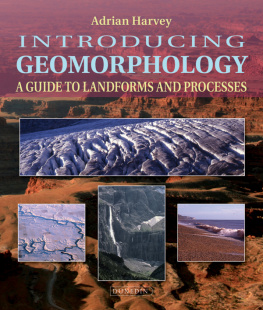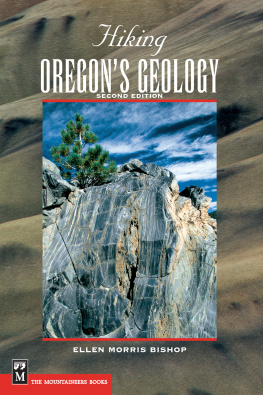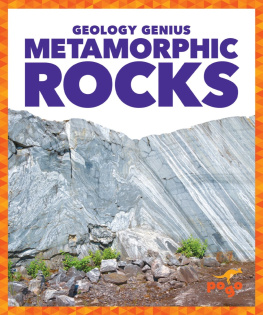Introducing
Geomorphology
Companion titles:
Introducing Geology A Guide to the World of Rocks (Second Edition 2010)
Introducing Palaeontology A Guide to Ancient Life (2010)
Introducing Volcanology ~ A Guide to Hot Rocks (2011)
Introducing Meteorology ~ A Guide to the Weather (forthcoming 2012)
Introducing Tectonics, Rock Structures and Mountain Belts (forthcoming 2012)
Introducing Oceanography (forthcoming 2012)
For further details of these and other Dunedin
Earth and Environmental Sciences titles see
www.dunedinacademicpress.co.uk
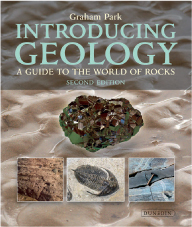
ISBN 978-1-906716-21-9
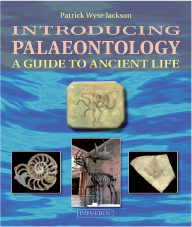
ISBN 978-1-906716-15-8
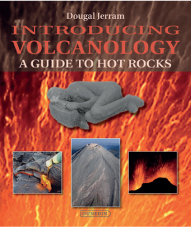
ISBN 978-1-906716-22-6
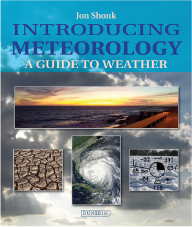
ISBN 978-1-780460-02-4
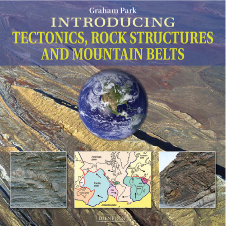
ISBN 978-1-906716-26-4

ISBN 978-1-780460-01-7
Introducing
Geomorphology
A Guide to Landforms and Processes
Adrian Harvey

Published by
Dunedin Academic Press Ltd
www.dunedinacademicpress.co.uk
Head Office
Hudson House, 8 Albany Street
Edinburgh, EH1 3QB
London Office
The Towers, 54 Vartry Road,
London, N15 6PU
Paperback book: 9781906716325
ePub: 9781903544433
ePub (Amazon/Kindle): 9781903544686
ePub (iPad, Fixed Layout): 9781903544693
Adrian Harvey 2012
The right of Adrian Harvey to be identified as the author of this work has been asserted by him in accordance with sections 77 and 78 of the Copyright, Designs and Patents Act 1988
All rights reserved.
No part of this publication may be reproduced or transmitted in any form or by any means or stored in any retrieval system of any nature without prior written permission, except for fair dealing under the Copyright, Designs and Patents Act 1988 or in accordance with the terms of a licence issued by the Copyright Licensing Society in respect of photocopying or reprographic reproduction. Full acknowledgment as to author, publisher and source must be given. Application for permission for any other use of copyright material should be made in writing to the publisher.
British Library Cataloguing in Publication data
A catalogue record for this book is available from the British Library
Design and layout by Makar Publishing Production, Edinburgh
Printed in Poland by Hussar Books
List of illustrations and tables
Preface
Many people enjoy scenery, and see landscapes as beautiful. Landscapes have inspired painters and photographers, even poets and composers of music. What is it about scenery that inspires people? For some it is clearly related to a scene with a natural vegetation cover, for others it might relate to a mood created by the weather, or atmospheric conditions. For most, the physical landscape (mountains, hills, rocks, rivers, the sea) is the basis of scenery. Geomorphology is the science that deals with landforms and physical landscapes. As a study it lies between the traditional disciplines of physical geography and geology, draws from both, and contributes to both.
The purpose of this book is to introduce the reader to the science of geomorphology. The book is not intended as a textbook; there are many of these at every level. I make no bibliographic references in the text, but in the end pages I make suggestions for further reading. In writing I have tried to present a broad and reasonably comprehensive view of the conceptual basis of the subject. I have tried to avoid mathematical treatments and to keep the level of physics and chemistry to a minimum.
Geomorphology inevitably involves a great range of spatial scales, from the global scale (continents and mountain systems) to the regional scale (individual mountain and hill ranges, river basins) to the local scale (conventional scenery: rivers, hillslopes, beaches, glaciers) and the micro-scale (weathering phenomena, sedimentary details). Partly related to spatial scales are timescales (geological time millions of years; the timescales of the ice ages half a million to tens of thousands of years; modern timescales the last ten thousand years; timescales of individual events, e.g. landslides, floods hours or days). The form of the earths surface, at all scales, results from the interplay between two sets of forces, though the relative importance of each varies with scale. The two sets of forces are internal (essentially geologically driven) and external (essentially climatically driven).
This book is organised from the top down, initially introducing the concepts related to spatial and temporal scales and the two main drivers of landform evolution (internal and external forces). Then the bulk of the material is organised by spatial scale, dealing first with global and regional scales, then with local and (to some extent) micro-scales. There are two final short chapters, one dealing with the integration of timescales and landscape evolution, the other dealing with interactions between human society and geomorphology.
Note: all terms highlighted in bold are defined in the Glossary at the end of the book.
Acknowledgements
In the writing of this book I am grateful to Dunedin Academic Press for their support and encouragement; to the staff of the School of Environmental Sciences (formerly the Department of Geography) at the University of Liverpool, throughout my career, and particularly to Sandra Mather, head of the Cartographics section there, for her unstinting attention to detail in preparing the maps and diagrams. I thank my family for their encouragement, my son Michael for providing the background cover photo. With the exception of those images downloaded from Google Earth, the other photos, good or bad, are my own. Finally, I especially thank my wife, Karina, for her constructive criticisms of my writing style, but particularly for her patience and understanding throughout the preparation of this book.
Introduction to geomorphology
In this chapter I introduce some fundamental concepts related to spatial and temporal scales of landforms and some basic material on the primary forces driving landform evolution: internal (geological) and external (climatic) forces.
1.1 What do we mean by landforms?
Geomorphology is the scientific study of the landforms of the surface of the Earth. These forms encompass a range of scales from that of, for example, the Earths major plains, plateaux and mountain ranges to that of small-scale forms, such as a beach or a river bank. Landforms of various scales are nested within one another so that within a mountain range, for example, there are individual mountain ridges and valley systems; within valley systems there are valley-side slopes and river channels; and within river channels there are gravel and sand bars. Studying landforms and the processes that create them inevitably involves study over a range of temporal and spatial scales. The processes that create the landforms include the creation of the relief itself and its modification by erosion and deposition. The temporal scales range from the short-term timescales at which some erosion processes operate, to the longer-term timescales of Earth history. The spatial scales range from large scales related to the global distribution of the relief forms of the land surface and the sea floor to local scales of, for example, individual hillslopes or river channels.
Next page
